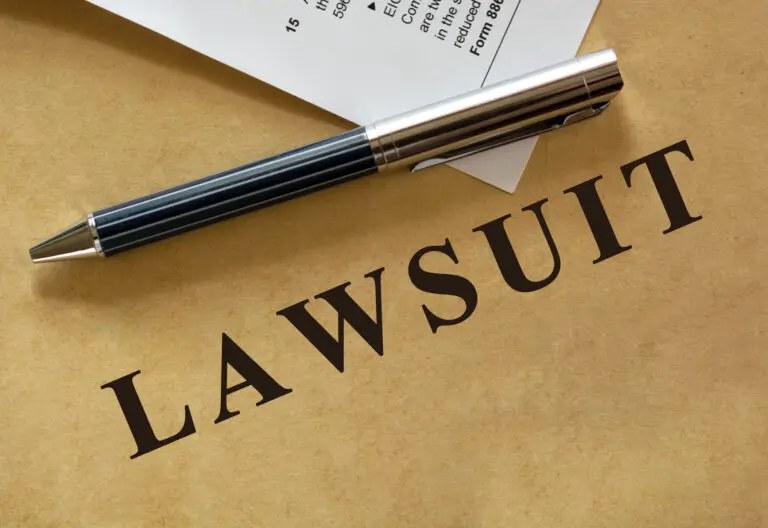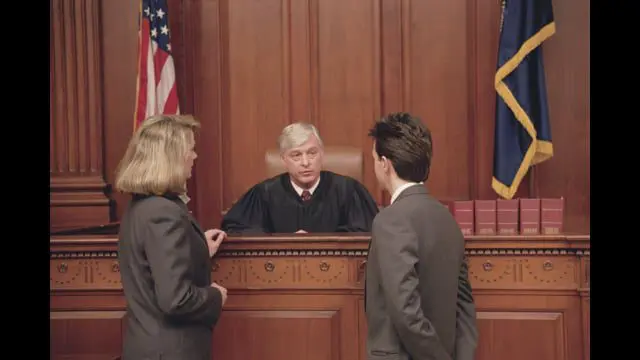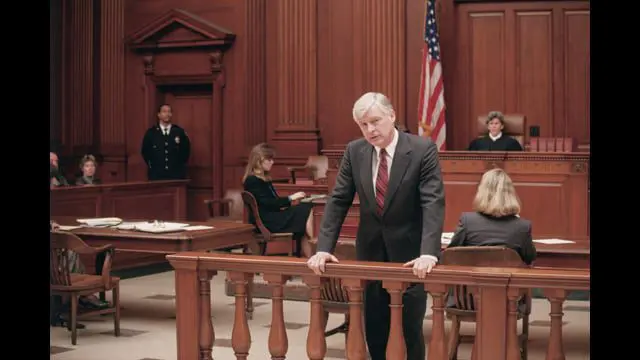En necessity defense is a legal principle that can justify criminal acts committed under extreme circumstances. This doctrine allows defendants to argue that their otherwise illegal actions were necessary to prevent a greater harm. In the realm of derecho penal, the necessity defense serves as a crucial safeguard, recognizing that there are rare situations where breaking the law may be the only reasonable course of action.
Historical Context and Development
The roots of the necessity defense can be traced back to ancient legal systems. In English common law, the concept emerged through cases where individuals faced dire circumstances that compelled them to violate the law. One early example is the 1551 case of Reniger v. Fogossa, where the court recognized that necessity could justify trespass in certain situations.
As legal systems evolved, the necessity defense gained recognition in various jurisdictions. In the United States, the defense has been shaped by both statutory law and case law. The Model Penal Code, developed in the 1960s, provided a framework for the necessity defense that influenced many state legislatures.
The necessity defense is grounded in the principle of choice of evils. This doctrine posits that when faced with two harmful options, an individual should be permitted to choose the lesser evil. The law recognizes that in extreme situations, strict adherence to legal prohibitions may lead to greater harm than allowing a limited violation.
Elements of the Necessity Defense
To successfully invoke the necessity defense, a defendant must typically establish several key elements:
- Imminent danger: The defendant must have faced an immediate and significant threat. This element requires that the danger was present and not merely speculative or future.
- Reasonable belief: The defendant must have reasonably believed that their actions were necessary to prevent the greater harm. This is generally evaluated from the perspective of a reasonable person in the defendant’s situation.
- No reasonable alternative: The defendant must demonstrate that there was no legal alternative that would have effectively prevented the harm.
- Proportionality: The harm caused by the defendant’s actions must be proportionate to or less than the harm they sought to prevent.
- Causal relationship: There must be a direct causal link between the defendant’s actions and the prevention of the greater harm.
- Clean hands: Some jurisdictions require that the defendant did not contribute to or create the emergency situation.
The burden of proving these elements typically falls on the defendant, who must present evidence supporting each aspect of the defense.
Application in Criminal Cases
The necessity defense has been invoked in a wide range of criminal cases, with varying degrees of success. Courts have grappled with defining the boundaries of this defense, recognizing its potential for abuse while also acknowledging its importance in extraordinary circumstances.
Property Crimes
One area where the necessity defense has found some acceptance is in cases involving property crimes. For instance, a person who breaks into an abandoned cabin during a blizzard to avoid freezing to death might successfully argue necessity. Courts have recognized that preserving human life can justify minor property violations in extreme situations.
However, the defense is not universally accepted for all property crimes. In cases of theft or burglary motivated by economic hardship, courts have generally been reluctant to allow the necessity defense. The reasoning is that economic necessity, if accepted as a defense, could potentially justify a wide range of property crimes and undermine the legal system.
Political Protests and Civil Disobedience
The necessity defense has been invoked in cases involving political protests and acts of civil disobedience. Activists have argued that their illegal actions, such as trespassing or property damage, were necessary to prevent greater harms like environmental destruction or human rights violations.
Courts have been cautious in applying the necessity defense to these cases. While recognizing the importance of political expression, judges have often held that the elements of immediacy and lack of legal alternatives are not met in many protest situations. The availability of legal channels for political change is frequently cited as a reason to reject the necessity defense in these contexts.
Medical Necessity
The concept of medical necessity has been raised in cases involving controlled substances. Defendants charged with drug possession or cultivation have argued that their actions were necessary to treat medical conditions. The success of this defense has varied widely depending on jurisdiction and the specific circumstances of each case.
In some instances, courts have accepted medical necessity as a valid defense, particularly in cases involving marijuana used for pain relief or symptom management. However, the federal government has generally rejected medical necessity as a defense for marijuana-related offenses under federal law.
Limitations and Criticisms
While the necessity defense serves an important role in the legal system, it is not without limitations and criticisms:
- Subjectivity: The reasonable belief standard introduces an element of subjectivity that can be challenging for courts to evaluate consistently.
- Potential for abuse: Critics argue that a broad application of the necessity defense could undermine the rule of law by allowing individuals to justify illegal actions based on personal beliefs about necessity.
- Slippery slope concerns: There are concerns that accepting necessity as a defense in certain cases could lead to its expansion to justify a wider range of criminal acts.
- Inconsistent application: The varying acceptance and interpretation of the necessity defense across jurisdictions can lead to inconsistent outcomes for similar cases.
- Difficulty in proving: The multiple elements required to establish the defense can be challenging for defendants to prove, particularly in cases where the prevented harm is speculative or abstract.
Judicial Interpretation and Precedents
The application of the necessity defense has been shaped by numerous court decisions. These precedents help define the scope and limitations of the defense across various contexts.
In United States v. Bailey (1980), the Supreme Court addressed the necessity defense in the context of prison escape. The Court held that for the defense to be available, the escapee must have made a bona fide effort to surrender or return to custody once the claimed duress or necessity had lost its coercive force.
The case of People v. Unger (1977) in Illinois provided a framework for evaluating the necessity defense in prison escape cases. The court outlined factors to consider, including the prisoner’s motive, the time between escape and recapture, and whether the prisoner immediately reported to proper authorities upon reaching a position of safety.
In environmental protest cases, courts have generally been skeptical of the necessity defense. In United States v. Schoon (1991), the Ninth Circuit Court of Appeals rejected the necessity defense for protesters who entered an IRS office to protest U.S. policy in El Salvador. The court reasoned that allowing such a defense would effectively grant protesters a “carte blanche” to violate the law whenever they disagreed with government policies.
However, some courts have shown openness to the necessity defense in environmental contexts. In People v. Gray (1981), a California appellate court allowed the necessity defense for protesters who had blocked the entrance to a nuclear power plant, recognizing the potential for a nuclear accident as an imminent harm.
Statutory Recognition and Variations
Many states have codified the necessity defense in their criminal statutes, often drawing from the Model Penal Code’s formulation. These statutes typically outline the elements required to establish the defense and may specify situations where it cannot be invoked.
For example, New York’s Penal Law § 35.05 recognizes the defense of justification, which includes necessity. The statute states that conduct which would otherwise constitute an offense is justifiable when “such conduct is necessary as an emergency measure to avoid an imminent public or private injury which is about to occur by reason of a situation occasioned or developed through no fault of the actor.”
Some jurisdictions have created specific statutory defenses that incorporate elements of necessity. For instance, many states have “castle doctrine” or “stand your ground” laws that justify the use of force in self-defense situations, embodying a form of necessity defense tailored to specific circumstances.
Procedural Aspects
The necessity defense typically involves specific procedural considerations in criminal trials:
- Pretrial notice: Many jurisdictions require defendants to provide notice of their intent to raise the necessity defense before trial. This allows the prosecution to prepare and the court to make preliminary rulings on the admissibility of the defense.
- Evidentiary hearings: Courts may hold pretrial hearings to determine whether there is sufficient evidence to allow the necessity defense to be presented to the jury.
- Jury instructions: If the defense is allowed, the judge must carefully instruct the jury on the elements of the necessity defense and how to apply it to the facts of the case.
- Burden of proof: While the prosecution always bears the burden of proving guilt beyond a reasonable doubt, the defendant typically bears the burden of producing evidence to support the necessity defense.
- Appellate review: The application or rejection of the necessity defense is often a subject of appeal, with higher courts reviewing whether the trial court properly allowed or disallowed the defense.
Comparative Perspective
The concept of necessity as a defense exists in many legal systems worldwide, though its specific formulation and application vary:
En German law, the necessity defense is divided into two categories: justifying necessity (rechtfertigender Notstand) and excusing necessity (entschuldigender Notstand). The former applies when the act prevents a greater harm, while the latter may excuse an act that was not objectively justified but was committed under extreme pressure.
French law recognizes the concept of “état de nécessité” (state of necessity) as a defense, which has been developed through case law. The French approach emphasizes the proportionality between the harm caused and the harm avoided.
En international law, the necessity defense has been recognized in the context of state responsibility. The International Law Commission’s Articles on State Responsibility allow states to invoke necessity to preclude the wrongfulness of an act not in conformity with an international obligation, subject to strict conditions.
Ethical and Philosophical Considerations
The necessity defense raises profound ethical and philosophical questions about the nature of law and morality:
- Utilitarianism vs. Deontology: The defense aligns with utilitarian ethics, which focuses on outcomes, rather than deontological ethics, which emphasizes adherence to moral rules regardless of consequences.
- Individual judgment vs. societal rules: The defense raises questions about when, if ever, individuals should be allowed to substitute their judgment for society’s collectively determined rules.
- Moral absolutism vs. moral relativism: The necessity defense challenges moral absolutist views by suggesting that the rightness or wrongness of an action can depend on circumstances.
- Rule of law concerns: Critics argue that allowing necessity as a defense could undermine the rule of law by introducing too much flexibility into legal prohibitions.
- Social contract theory: The defense can be seen as an implicit recognition that the social contract has limits and that individuals retain some right to violate laws in extreme circumstances.
Future Developments and Challenges
As society evolves, the necessity defense faces new challenges and potential applications:
- Climate change activism: Environmental activists are increasingly invoking the necessity defense in cases related to climate change protests, arguing that their actions are necessary to prevent catastrophic environmental harm.
- Avances tecnológicos: As technology creates new forms of threats and emergencies, courts may need to reevaluate how the necessity defense applies in digital contexts.
- Public health emergencies: The COVID-19 pandemic has raised questions about the potential application of the necessity defense in the context of public health measures and individual actions during health crises.
- Artificial intelligence and autonomous systems: As AI systems become more prevalent, questions may arise about how the necessity defense might apply to actions taken by or in response to autonomous systems.
- Evolving social norms: Changing societal values and perceptions of harm may influence how courts and legislators define the scope of the necessity defense.
Conclusión
En necessity defense stands as a testament to the law’s recognition of moral complexity and the potential for extraordinary circumstances to justify otherwise criminal acts. It reflects a nuanced approach to justice that acknowledges the limitations of rigid legal rules in capturing the full spectrum of human experience.
However, the defense remains controversial and challenging to apply consistently. Courts must carefully balance the need for flexibility in extreme situations against the risk of undermining the rule of law. As society faces new challenges and moral dilemmas, the necessity defense will likely continue to evolve, reflecting ongoing debates about the relationship between law, morality, and individual judgment in a complex world.
Ultimately, the necessity defense serves as a reminder that the law, at its best, strives to embody not just rules, but wisdom and compassion in the face of human frailty and the unpredictability of life. It challenges legal systems to remain responsive to the realities of human experience while maintaining the integrity and predictability essential to a functioning society governed by the rule of law.
Website citations:









